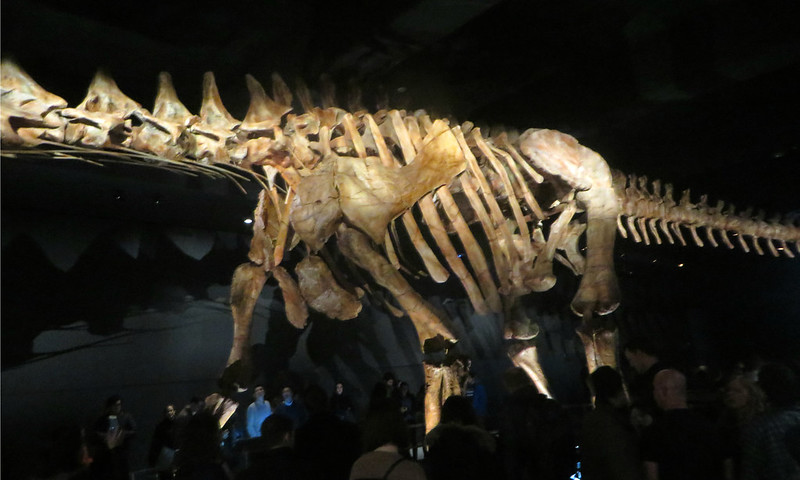
An unusual kind of tiny dinosaur called a titanosaur, has finally been given a name nearly fifty years after its bones were unearthed in the Egyptian desert. This dinosaur is called “Igai semkhu,” and it lived about seventy-five million years ago in what is now known as the Kharga Oasis. The titanosaur fossils will finally fill in gaps in dinosaur history.
The name “Igai semkhu” means “Forgotten Lord of the Oasis” in Ancient Egyptian, and it can be written using hieroglyphics. Matthew Lamanna, a scientist who studies dinosaurs at the Carnegie Museum of Natural History, said, “It’s named after a deity the Ancient Egyptians would have worshiped in the oasis it came from.”
Official naming of the titanosaur
The small titanosaur, which was about 33 to 50 feet (10 to 15 meters) long, was officially named in July 2023, and this information was published in the Journal of Vertebrate Paleontology.
Matthew Lamanna expressed his excitement, saying, “It’s definitely something to get excited about.” He further said, “It is helping fill in this black hole in our understanding of the final 30 million years of the Age of Dinosaurs on one of the largest landmasses on Earth.”
More details about titanosaur fossils
German researchers first discovered fossils of the Igai semkhu species in the Western Desert of Egypt back in 1977, but these remained forgotten for many years until Matthew Lamanna and his team decided to take a closer look.
As it turns out, Igai semkhu belongs to a brand-new group of titanosaur dinosaurs, a type of sauropod. Sauropods were herbivorous dinosaurs with small heads, long necks, and large, elephant-like bodies.
Around 75 million years ago, when Igai semkhu lived, most sauropods had already disappeared, and titanosaurs were the only remaining branch of sauropods during the Cretaceous era, which lasted from 145 million to 66 million years ago.
Hot off the press, we have a new #sauropod from #Egypt, Igai semkhu!
This only adds to the growing body of evidence we're developing for the Campanian–Maastrichtian of Africa. pic.twitter.com/lVg1wRSUUh
— Jamale Ijouiher (@JamaleIjouiher) July 20, 2023
Despite their name, titanosaurs weren’t always gigantic. According to Lamanna, “Titanosaurs range from some of the smallest sauropods ever found, about the size and weight of a cow, all the way up to the size of a humpback whale.”
It is now believed that Igai semkhu falls somewhere between these extremes in terms of size. Eric Gorscak, a co-author of the study and a paleontologist at Midwestern University, estimated the size of Igai semkhu based on a pair of leg bones, namely the tibia and fibula.
The largest estimate suggests it could have been about as long as a school bus, making it “a bit smaller than the average titan,” as per Lamanna.
Knowledge gap in the study of dinosaurs
According to Lamanna, the scarcity of relevant fossils means our knowledge is quite limited. It is, therefore, impossible to determine what Igai semkhu might have looked like with a great amount of precision. However, despite limited remains, Igai semkhu is considered one of the most complete dinosaur fossils ever discovered in Africa. Dinosaur fossils are not commonly found on the continent.
Lamanna explained that when it comes to continental Africa, there is a significant gap in our knowledge of dinosaur history over the last thirty million years.
One reason for this gap is that paleontologists have not been exploring Africa for as long as other places. Furthermore, although there are many rocks from the Cretaceous era in Africa, they are often inaccessible. Many possible fossil sites are either hidden beneath dense plant cover or buried in deep desert sands.
This scarcity of fossils makes the recently named titanosaur especially valuable. According to John Whitlock, a professor of Anatomy at Mount Aloysius College in Pennsylvania who wasn’t part of the study, “Igai is, although still fragmentary, complete relative to the rest of the record, and is, therefore, a pretty significant addition to our understanding.”
See all the latest news from Greece and the world at Greekreporter.com. Contact our newsroom to report an update or send your story, photos and videos. Follow GR on Google News and subscribe here to our daily email!



